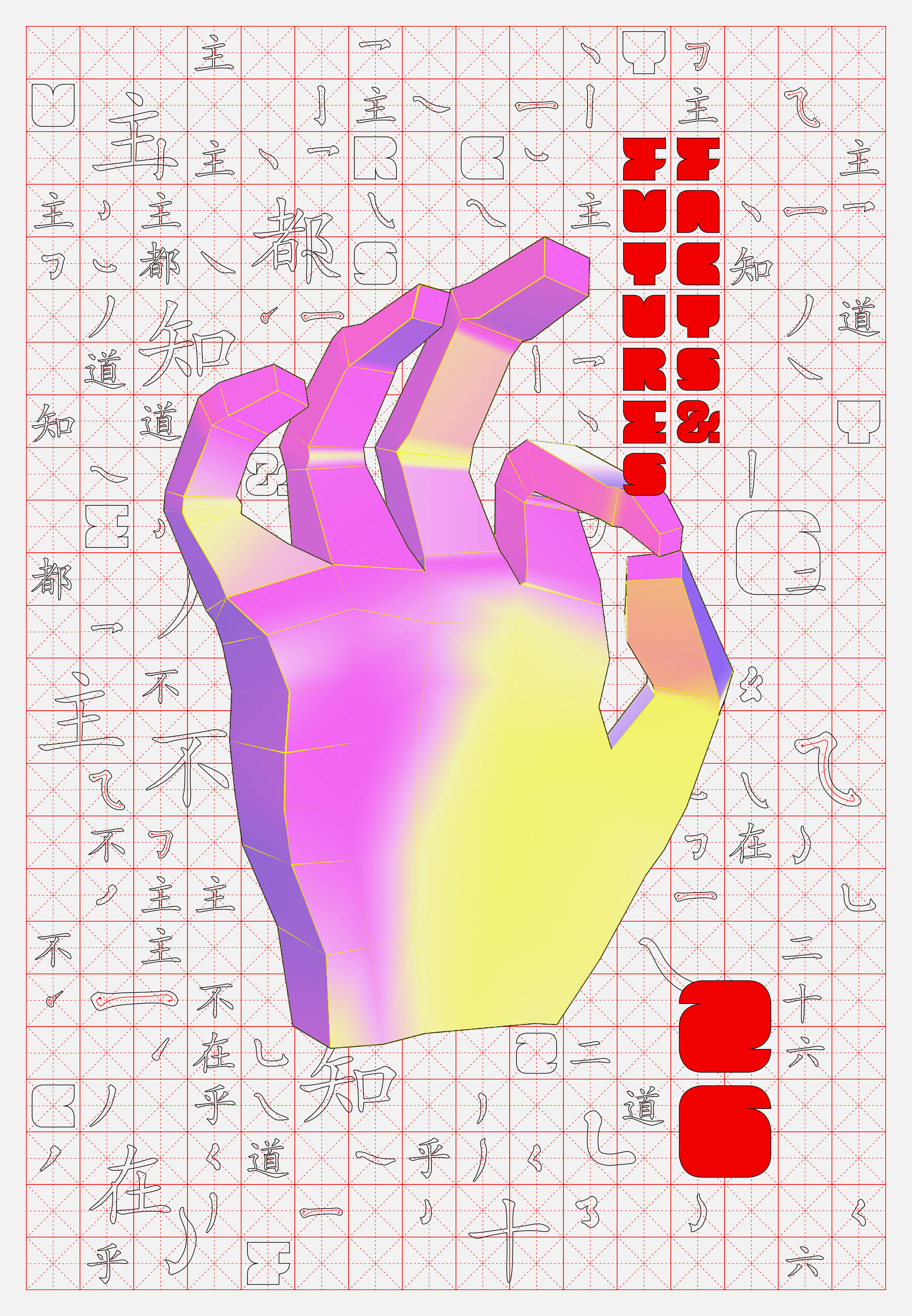

26 FACTS & FICTIONS
XIN WANG︎︎︎
I’m an art historian by training, and throughout the course of my (over)education I’ve been exposed to myriad trajectories in which images are made, derived, edited, post-edited. As a result, there is always hyper-sensitivity towards the generative parameters that inform the politics and erotics of visuality. Images often to me function as hyperlinks, always embedded with a dynamic exchange of information within ever expansive communities of images, actions of knowledge and reflection. Whenever we feel that we cannot exhaust those parameters, we are likely in the presence of an image worthy of an intellectual exercise (and often some aesthetic pleasure). This is more or less the guiding principle for the discursive (A)Futurism archive I’m slowly amassing on Tumblr; it does not tend to exhaust nor contour a field, but does follow an algorithm that vehemently avoids fetishizing highly capitalizable yet trite concepts like “shanzhai” or tokenizing digestible “Eastern” philosophy.
Images can also be coded like languages in that meaning and a pure visual reading sometimes have only a tenuous relationship. In general, I prefer messy, slovenly images, which may have something to do with a fascination and immersion in the glorious aesthetic clusterfuck that is contemporary Chinese visual culture: so many broken semantic links and unintentional wonder; it is full of the “poor images” Hito Steyerl relentlessly defends. Ultimately the most active, fruitful yet elusive site is located between images and the spectators. Trevor Paglen, when speaking about surveillance imaging calibrated with smart, comprehensive real meta data, argues for a sinister reverse “gaze” where images become predatory, and that struggles over meaning are always bound by struggles over power. The approach serves as an apt metaphor for vigilance and rigor of looking, but what’s closer to heart is what drives Roland Barthes in his classic treatise on photography, Camera Lucida: “a desperate resistance to any reductive system.”
XIN WANG︎︎︎ is an art historian, curator, and art critic based in New York. Past curatorial projects include “Ink Art: Past as Present in Contemporary China” (2013) at the Metropolitan Museum of Art, Asian Contemporary Art Week 2014 and the inaugural edition of its signature program FIELD MEETING, “Lu Yang: Arcade” (2014)—-New York solo debut of the artist, “THE BANK SHOW: Vive le Capital” and “THE BANK SHOW: Hito Steyerl” (2015) in Shanghai, “chin(A)frica: an interface” at The Institute of Fine Arts, New York University (2017), and “Life and Dreams: Photography and Media Art in China since the 1990s” (2018) at the Walther Collection, Ulm, Germany. Her writing has appeared on exhibition catalogues (including the 2015 Venice Biennale) and publications such as E-flux, Artforum, Rhizome, Kaleidoscope, Art in America, Flash Art, Hyperallergic, and Leap. Currently pursuing a PhD in modern and contemporary art at Institute of Fine Arts, New York University, Wang also works as the Joan Tisch Teaching Fellow at the Whitney Museum of American Art and manages the discursive archive on Asian Futurisms at afuturism.tumblr.com.
I’m an art historian by training, and throughout the course of my (over)education I’ve been exposed to myriad trajectories in which images are made, derived, edited, post-edited. As a result, there is always hyper-sensitivity towards the generative parameters that inform the politics and erotics of visuality. Images often to me function as hyperlinks, always embedded with a dynamic exchange of information within ever expansive communities of images, actions of knowledge and reflection. Whenever we feel that we cannot exhaust those parameters, we are likely in the presence of an image worthy of an intellectual exercise (and often some aesthetic pleasure). This is more or less the guiding principle for the discursive (A)Futurism archive I’m slowly amassing on Tumblr; it does not tend to exhaust nor contour a field, but does follow an algorithm that vehemently avoids fetishizing highly capitalizable yet trite concepts like “shanzhai” or tokenizing digestible “Eastern” philosophy.
Images can also be coded like languages in that meaning and a pure visual reading sometimes have only a tenuous relationship. In general, I prefer messy, slovenly images, which may have something to do with a fascination and immersion in the glorious aesthetic clusterfuck that is contemporary Chinese visual culture: so many broken semantic links and unintentional wonder; it is full of the “poor images” Hito Steyerl relentlessly defends. Ultimately the most active, fruitful yet elusive site is located between images and the spectators. Trevor Paglen, when speaking about surveillance imaging calibrated with smart, comprehensive real meta data, argues for a sinister reverse “gaze” where images become predatory, and that struggles over meaning are always bound by struggles over power. The approach serves as an apt metaphor for vigilance and rigor of looking, but what’s closer to heart is what drives Roland Barthes in his classic treatise on photography, Camera Lucida: “a desperate resistance to any reductive system.”
XIN WANG︎︎︎ is an art historian, curator, and art critic based in New York. Past curatorial projects include “Ink Art: Past as Present in Contemporary China” (2013) at the Metropolitan Museum of Art, Asian Contemporary Art Week 2014 and the inaugural edition of its signature program FIELD MEETING, “Lu Yang: Arcade” (2014)—-New York solo debut of the artist, “THE BANK SHOW: Vive le Capital” and “THE BANK SHOW: Hito Steyerl” (2015) in Shanghai, “chin(A)frica: an interface” at The Institute of Fine Arts, New York University (2017), and “Life and Dreams: Photography and Media Art in China since the 1990s” (2018) at the Walther Collection, Ulm, Germany. Her writing has appeared on exhibition catalogues (including the 2015 Venice Biennale) and publications such as E-flux, Artforum, Rhizome, Kaleidoscope, Art in America, Flash Art, Hyperallergic, and Leap. Currently pursuing a PhD in modern and contemporary art at Institute of Fine Arts, New York University, Wang also works as the Joan Tisch Teaching Fellow at the Whitney Museum of American Art and manages the discursive archive on Asian Futurisms at afuturism.tumblr.com.